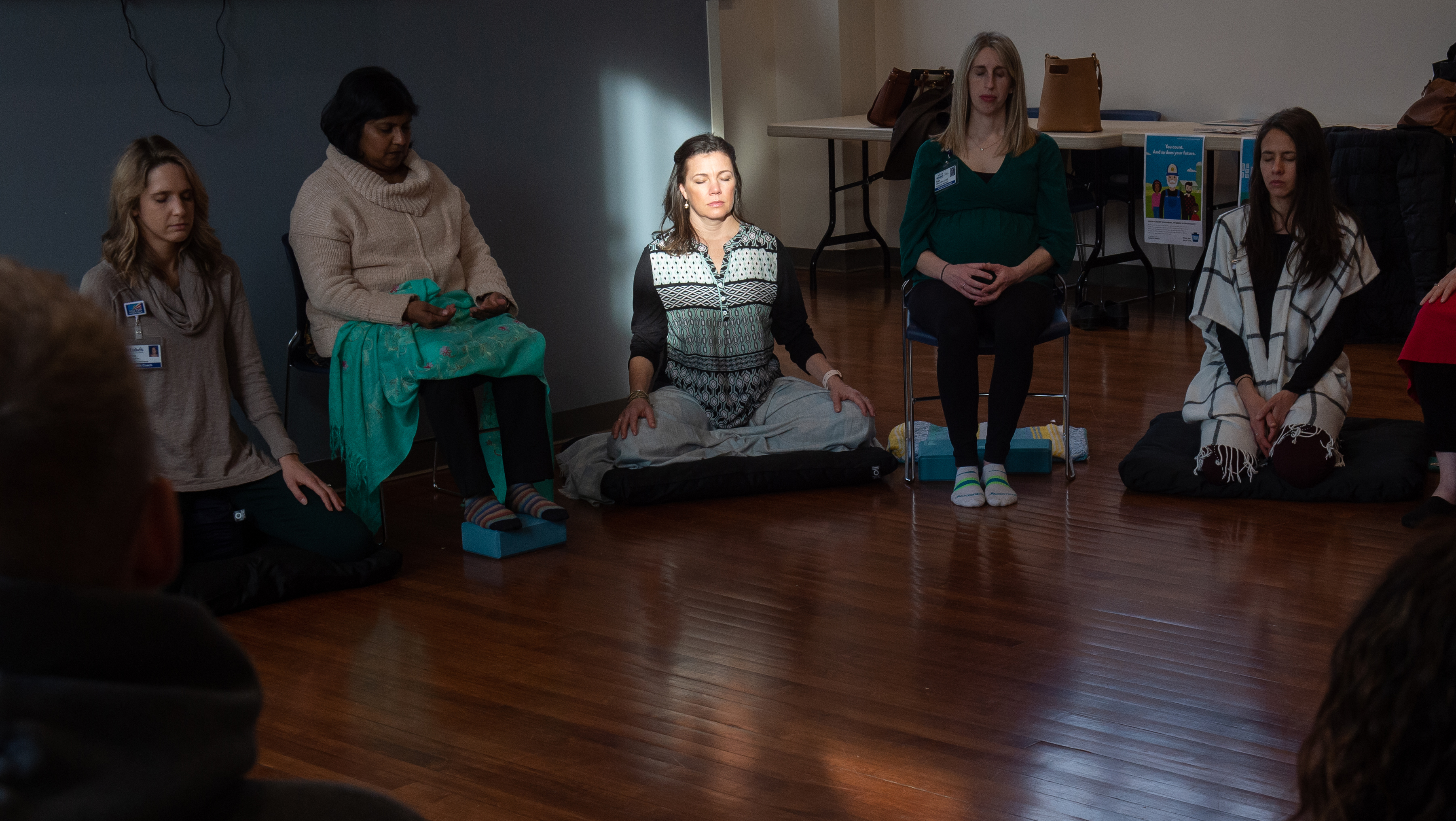Mindfulness in Times of COVID-19
June 17, 2020
Padma Fanning
Mindfulness Coordinator, St. Luke’s University Health Network

For many of us, the past weeks and months have been a confusing and stressful time. But in difficult times, it becomes even more important to find calm.
Mindfulness can really help with this, because when we stay still and pay attention in a gentle and kind way, we are less likely to be overwhelmed with fear or anger. We are essentially giving attention and care to what is needed now.
In mindfulness practices, we harness and use the body and the breathing to arrive into the present moment. Science proves that this helps our body and mind find calm and respite from anxiety.
Regular practice builds these habits—so that when we need to find that inner calm, it is easier to access. Here are a few mindfulness practices that you can incorporate easily into your daily routine. St Luke's also offers mindfulness courses to support your practice.
An 8-week Mindfulness-Based Stress Reduction (MBSR) Course will take place online. It begins on Tuesday, Sept 8 from 6:00 pm to 8:00 pm.
-
Take a Three-minute Breathing Space
The breath is an immediate and natural ally when it comes to restoring calm within the body and mind. When your exhale is even a few counts longer than your inhale, this sends a signal to "rest and reset" and turn down the flight-or-flight response that fires up your heart rate, speeds up your breathing, and sends stress hormones through your body.
Step away from what you are doing as soon as you notice you feel overwhelmed or (di)stressed. Begin by breathing in deep through the nose, and then take a longer, slower breath out through pursed lips. Do this for just a few minutes.
-
Find Grounding in the Body
The body scan is a wonderful practice that helps to connect us with what's present. In being aware of the body we can notice signs of (di)stress, and bring care and attention to what's needed. There are plenty of body scan recordings available in mindfulness apps—or you can take time to do a brief, self-guided body scan, lying down if that's possible.
Simply start at the top of the head, and slowly bring awareness step by step to the different parts of the body all the way down to your feet and toes—and remember to include the arms on the way. As you scan down through the body, you might notice places where you feel tightness or a sense of anxiety. Just take a few extra moments to breathe into that place in the body, and on the exhale imagine healing light, or simply imagine letting go.
-
Practice Self-compassion
A key skill that we develop in mindfulness practice is to approach what is present with an attitude of kindness and non-judgment. Many people find this the most radical aspect of the practice. They begin to notice a self-critical voice that comments on much of what is happening. A simple practice we can do when we feel upset about something is to bring mindful self-compassion to the experience. This has 3 stages:
- Identify what it is that you feel upset about. Use language to identify feelings, such as "this is hard," or "this really hurts."
- Remind yourself that what you are going through is common. Again, you can use language to reinforce this, like "I'm not alone," or "It's normal to feel this way."
- Bring kindness to the situation. Place your hands on your heart and wish yourself well. Say things to yourself you might say to a friend who was going through this: "You're going to be fine," or "I'm here for you."
Read More News